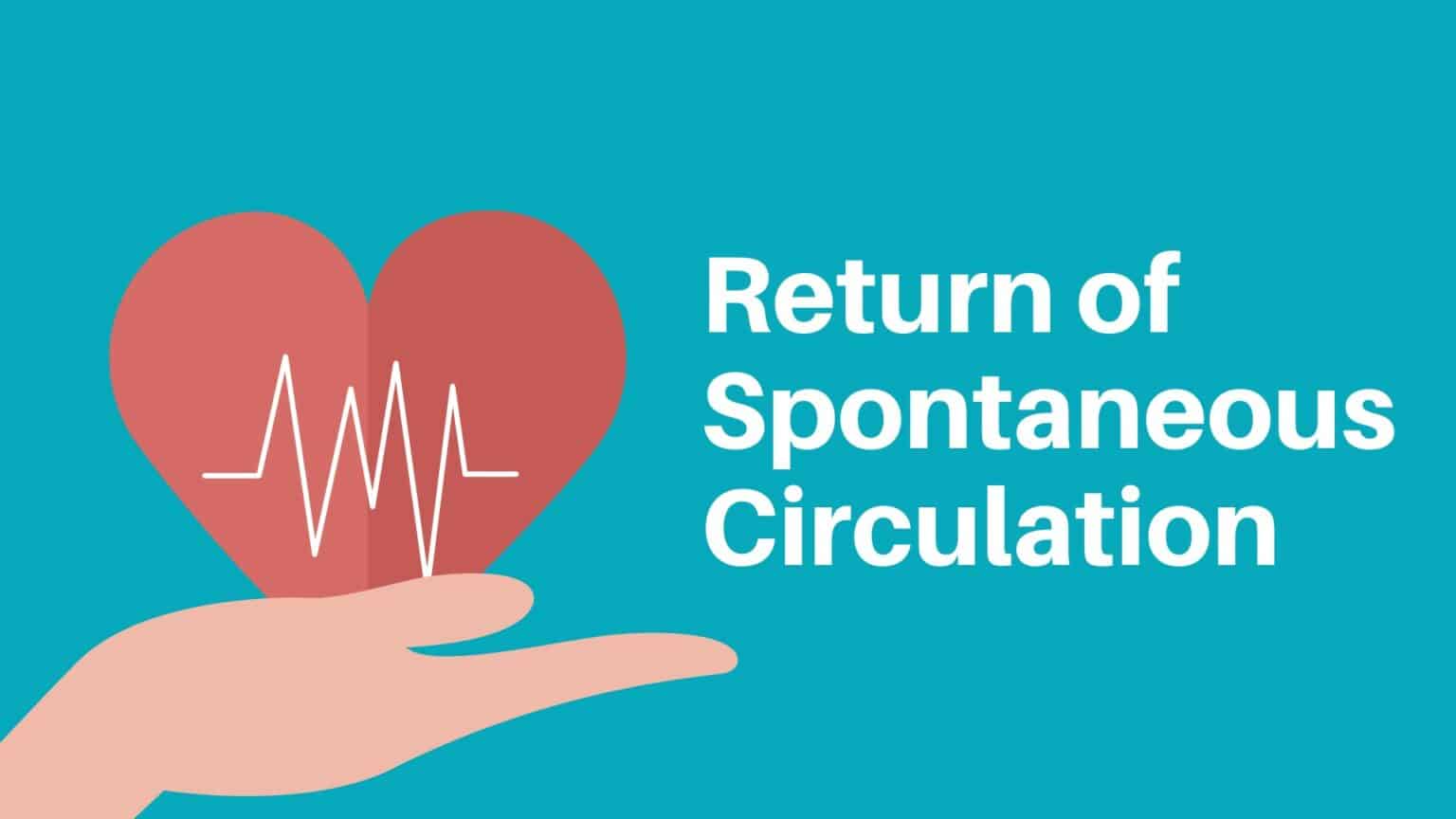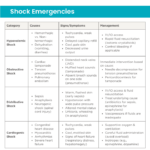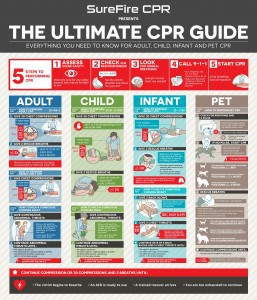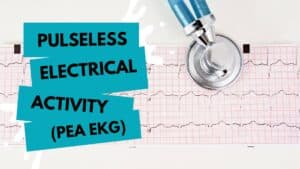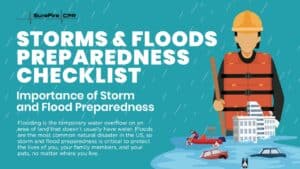The return of spontaneous circulation (ROSC) is the goal of CPR. A critical component of understanding what CPR is includes an understanding what ROSC is, how to identify it when it occurs, and what to do immediately after it is achieved.
Introduction: The Heart of the Matter
Return of spontaneous circulation is the objective after cardiac arrest, which is the spontaneous cessation of heart activity. It can occur when the heart’s electrical system stops working properly, which can lead to an abnormal heart rhythm. High quality CPR, sometimes combined with defibrillation, can be used to attempt resuscitation with the ultimate goal of ROSC.
What is Return of Spontaneous Circulation?
Return of spontaneous circulation is the resumption of sustained cardiac activity due to significant resuscitation efforts after cardiac arrest. Signs of ROSC might include:
- Movement
- Coughing
- Breathing
- Detectable pulse
- Measurable blood pressure
Although ROSC is a positive sign and the goal of CPR, it does not necessarily predict the long-term outcome for the patient. Post cardiac arrest care is critical once ROSC is achieved to ensure the best possible outcome.
The CPR Lifeline: Paving the Way to ROSC
High-quality CPR is the most effective pathway to ROSC. The 5 initial steps of CPR include:
- Assess scene for safety
- Check victim for responsiveness
- Look for signs of normal breathing
- Call 9-1-1
- Begin CPR
For adult CPR, give 30 chest compressions and 2 rescue breaths until an AED is ready to use, a trained rescuer arrives, or you achieve ROSC. Children should receive the same 30 chest compressions and 2 rescue breaths (for healthcare providers with 2 rescuers, it should be 15 compressions and 2 rescue breaths). However, you should determine whether to use 1 or 2 hands for chest compressions, based on the size of the child. See our CPR Ratio Chart and Key Numbers guide.
Use of an automated emergency defibrillator (AED) can increase a victim’s odds of achieving ROSC after cardiac arrest. To use an AED, turn the device on and place the pads on the victim’s chest. The AED will analyze the victim’s heart rhythm and advise you how to proceed. If the device recommends shock, make sure no one is touching the victim by calling out, “clear,” before initiating the shock.
High-quality CPR requires training to ensure proper positioning and timing of the resuscitation efforts. A CPR certification course can provide you with the necessary skills and practice to perform CPR for ROSC correctly.
ROSC in the Medical Field: A Closer Look
Measurement for ROSC involves noticeable signs like breathing or movement, as well as measurable signs that a healthcare professional might assess. It should be noted that while achievement of ROSC is a positive sign, it does not guarantee a positive outcome. Post-cardiac arrest care is critical after a patient achieves ROSC to increase odds of survival.
At the same time, ROSC may be delayed, occurring once CPR efforts have been stopped. Known as the Lazarus phenomenon, this possibility is why passive monitoring of the patient should continue for 10 minutes after stopping CPR.
The Signs of Success: Recognizing ROSC
One of the easiest changes to measure is a rapid increase in the patient’s EtCO2 level. During cardiac arrest, the patient stops exchanging oxygen and CO2 in their lungs. Once you have achieved ROSC, you should see the CO2 levels increase if you place a laryngeal mask airway (LMA) or endotracheal tube (ETT) and attach an EtCO2 monitor to it.
In some cases of ROSC, the patient may begin breathing on their own again. However, the restored breathing is unlikely to be effective enough to provide needed oxygen without assisted ventilation. This can typically be done with the LMA or ETT.
Once the patient’s blood pressure increases, you may detect a palpable pulse as well. In addition to checking for the pulse, you can use the AED to see if you have an organized rhythm.
The Technical Side Simplified
One of the easiest changes to measure is a rapid increase in the patient’s EtCO2 level. During cardiac arrest, the patient stops exchanging oxygen and CO2 in their lungs. Once you have achieved ROSC, you should see the CO2 levels increase if you place a laryngeal mask airway (LMA) or endotracheal tube (ETT) and attach an EtCO2 monitor to it.
In some cases of ROSC, the patient may begin breathing on their own again. However, the restored breathing is unlikely to be effective enough to provide needed oxygen without assisted ventilation. This can typically be done with the LMA or ETT.
Once the patient’s blood pressure increases, you may detect a palpable pulse as well. In addition to checking for the pulse, you can use the AED to see if you have an organized rhythm.
Understanding the Mechanics of CPR
We cannot stress the critical importance of high-quality CPR for achieving ROSC. The quality of CPR can also be enhanced by minimizing interruptions to chest compressions, ensuring compressions achieve threshold values, and adding antiarrhythmic medications whenever possible.
What is ROSC in CPR: A Deeper Dive
One factor of optimal CPR is minimizing interruptions once it has started. Coronary perfusion pressure (CPP) is an important correlation with blood flow and ROSC. If CPR does not achieve a CPP 15mm Hg or greater, ROSC is less likely to occur. To arrive at that CPP level, interruptions to chest compressions need to be minimal.
This is a consideration while using a defibrillator as well as performing chest compressions. The time taken for the defibrillator to charge can be used for chest compressions so the interval between compression and shock is as small as possible. Even a few seconds improves a patient’s chances of ROSC.
Antiarrhythmic medications should also be considered before or after administering a shock to improve odds of ROSC. Amiodarone is usually the first choice in cardiac arrest, since it has been clinically shown to improve the incidence of ROSC in some cardiac arrest patients. Other options might be lidocaine and epinephrine.
The correct chest compressions also increase the odds of ROSC, which can be measured by the patient’s PETCO2 levels. If PETCO2 levels remain below 10 mm Hg during CPR once a patient is intubated, ROSC becomes much less likely.
Learning CPR: Your Path to Making a Difference
The odds of achieving ROSC with CPR are directly correlated to the quality of CPR the patient receives. To give your patients their best odds of survival, proper CPR skills cannot be overstated. It’s not enough to know how to give chest compressions and rescue breaths. The ability to achieve the proper compression depth, minimize compression interruptions, and the addition of antiarrhythmic drugs will all make a difference for your patient.
CPR Training to Optimize Return of Spontaneous Circulation
Give your patients the best odds of ROSC by fine tuning your CPR skills. A CPR and AED certification class gives you the chance to refresh your knowledge and practice your skills so you are prepared for any cardiac arrest emergency. SureFire CPR offers training classes taught by experts in the field who are committed to making training informative and fun. With better focus during class and greater retention afterward, you will be equipped to give your patients the highest level of care possible.
SureFire CPR offers classes at our Southern California locations, as well as online and on-site. Contact us today to get our current class schedule.

